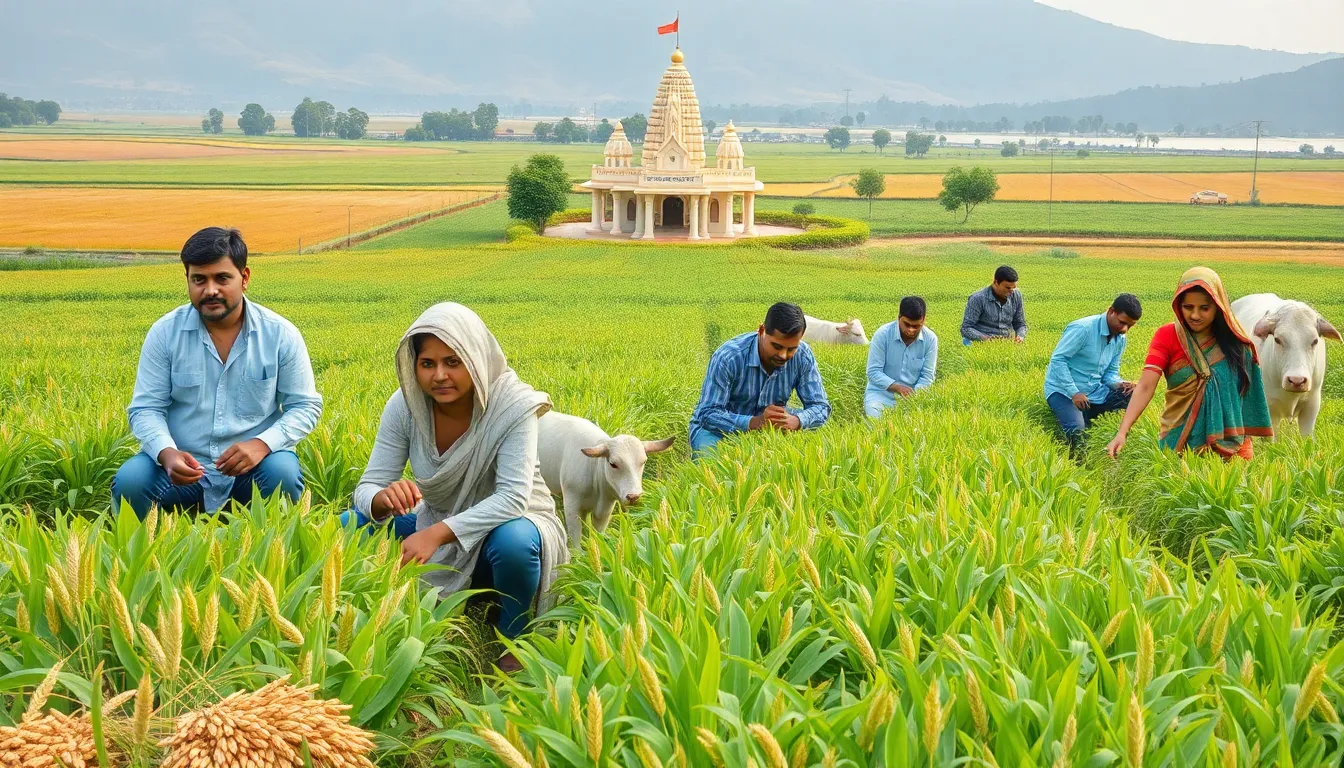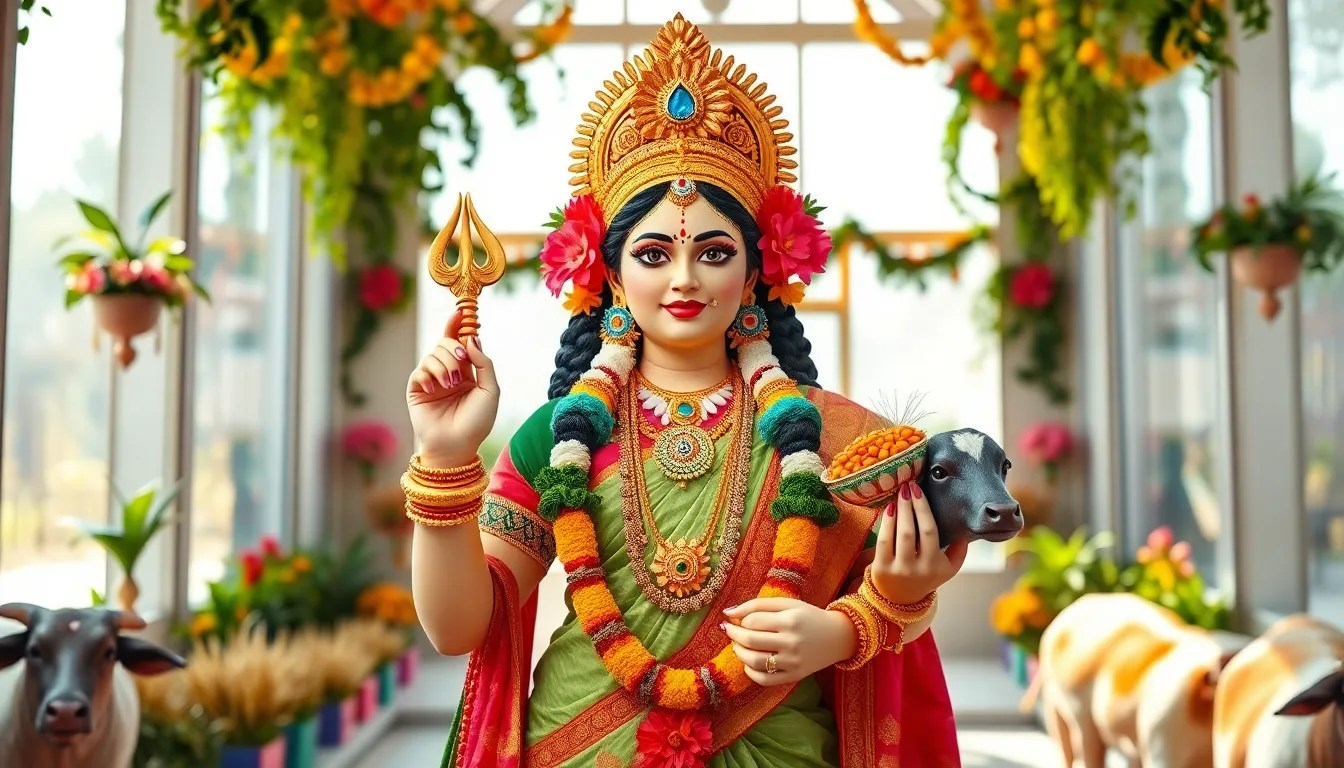Imagine a deity who embodies the essence of devotion and abundance, a figure that transcends time and tradition. That’s Gowthalamma for you. Revered in various regions, she is not just a symbol of agricultural prosperity but also a reflection of the rich cultural tapestry that binds communities together. In this text, we will investigate into the history, rituals, and evolving interpretations of Gowthalamma, revealing why she continues to be a beloved figure in contemporary society. So, buckle up as we explore the divine path of Gowthalamma.
Table of Contents
ToggleHistory and Origins of Gowthalamma

Gowthalamma’s roots stretch deep into the agricultural heartlands of South India. 1st century references to her can be traced back to ancient scriptures that highlight her as a goddess of fertility and prosperity, often depicted with symbols of abundance such as grains and livestock. It’s believed that local farmers began to worship her to ensure good harvests, leading to the establishment of various temples dedicated to her.
Many scholars suggest that her origin is also intertwined with local folk traditions. As communities formed, they began to personify their agricultural needs, leading to the veneration of deities that could provide for their livelihoods. The agrarian culture not only gave birth to Gowthalamma but also shaped her identity as a protector and nurturer, revered by generations.
Through the years, various tales and legends have expanded her narrative, making her an integral part of local folklore. Stories of her miracles during droughts or bad weather circulated among villagers, solidifying her status as a crucial figure in their spiritual lives.
Regional Variations in Worship Practices
When it comes to Gowthalamma, one size certainly does not fit all. Her worship varies significantly across regions, with each locality contributing its own unique flavor to the rituals. In Karnataka, for instance, devotees celebrate her with spirited folk dances and elaborate offerings during harvest time. The atmosphere becomes electric, filled with music and joy, as locals thank her for a bountiful season.
Head over to Tamil Nadu, and you’ll find different traditions taking shape. Here, Gowthalamma is often celebrated through intricate rituals involving water and soil, symbolizing the connection between the earth and the divine. These practices reflect the deep reverence for nature, emphasizing sustainable agriculture.
Meanwhile, in Kerala, some communities host vibrant communal feasts dedicated to her, encouraging participation from all walks of life. These gatherings not only express gratitude but also serve to strengthen social bonds among community members. So, the way Gowthalamma is worshiped shines a light on these regions’ unique cultural identities while reinforcing a shared devotion to her.
Rituals and Festivals Dedicated to Gowthalamma
Festivals honoring Gowthalamma are as vibrant as the goddess herself, often marked by colorful processions, traditional music, and heartfelt devotion. One of the most prominent celebrations is the Gowthami Festival, observed in various states. It typically includes rituals that last several days, culminating in a grand celebration that draws in thousands of devotees.
During this festival, homes are adorned with lush greenery and flowers, symbolizing fertility and abundance. Towns hold processions featuring beautifully decorated idols of Gowthalamma, accompanied by song and dance. Such lively celebrations not only uplift the community spirit but also reinforce the cultural significance of farming traditions.
Plus to the annual festivals, daily rituals at local temples maintain her presence in the lives of her devotees. Offerings such as milk, ghee, and grains are made, acting as a daily reminder of her nurturing qualities. Also, every full moon is marked by special prayers to elicit blessings for prosperity and health in agricultural endeavors.
The Symbolism Behind Gowthalamma’s Iconography
Gowthalamma’s iconography is rich with symbolism, each element carefully chosen to represent her multifaceted nature. Typically, she is depicted holding agricultural implements, emphasizing her connection with farming and abundance. The presence of cows, which are often associated with prosperity, reflects her role as a provider. This depiction resonates deeply with agricultural societies, where livestock symbolize wealth and nourishment.
Another significant aspect of her imagery is the use of natural elements in her adornments. Flowers, grains, and fruits are often depicted alongside her, illustrating the cycle of nature and the bountiful gifts it provides. These visuals serve as reminders of the crucial bond between humans and their environment.
In some depictions, Gowthalamma appears surrounded by her devotees, establishing a direct link between her and the communities who worship her. These paintings and sculptures are not only artistic expressions but also powerful cultural symbols, representing communal identity, values, and beliefs.
Modern Interpretations and Adaptations
In today’s fast-paced world, Gowthalamma’s significance has not faded: rather, it has transformed. Younger generations are rediscovering her through more contemporary lenses, often integrating her worship into urban life. Temples have started incorporating technology for easier access to devotees, using apps for prayer requests, virtual pujas, and online donations.
Also, artistic reinterpretations of her stories are becoming increasingly popular. Street art, folk performances, and literature are evolving mediums through which her legacy is being shared, often drawing attention to environmental issues and sustainability, a nod to her role as a goddess of fertility.
Also, community initiatives focused on sustainable farming practices often invoke her blessings, showing that her cultural relevance extends beyond mere worship. These modern adaptations illustrate that while traditions may evolve, the core values associated with Gowthalamma, nurturing, protection, and abundance, remain deeply embedded in society.


